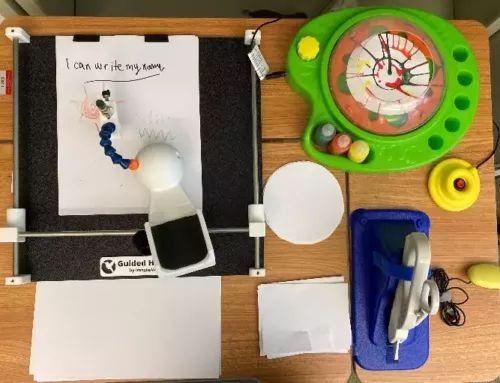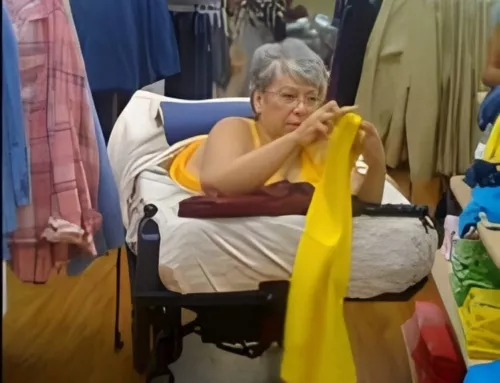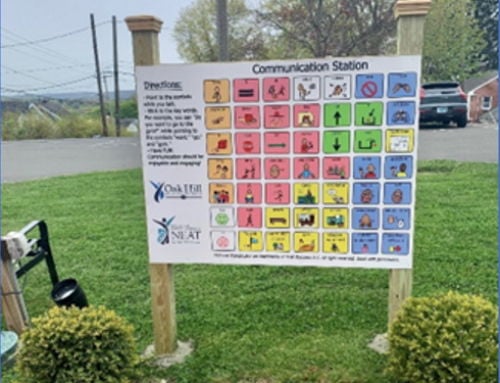PVC Therapy Trikes Keep Kids Peddling in Utah
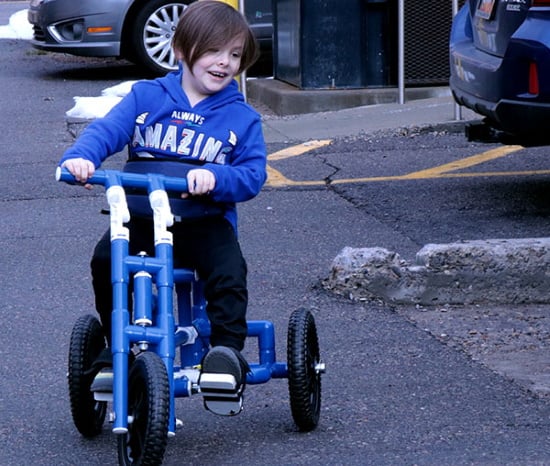
Thank you, JoLynne Lyon, for sharing this post about Utah’s joyful maker initiative. Utah Assistive Technology Program (UATP) volunteer, Mike Stokes, has designed an affordable therapy trike for kids who need a stable ride and some warm-weather fun during quarantine.

Biking is Crew’s favorite part of physical therapy. “He loves it,” said his mother, Melissa. “For him, it’s playtime.”
But a standard bike—even one with training wheels—wasn’t appropriate for him. Bikes with training wheels teeter, and six-year-old Crew needs more stability. When he rode a bike in therapy sessions, it was on a specialized piece of therapy equipment.
Melissa looked into getting him one of his own, but sticker shock set in.
“They’re so expensive. That’s not in our budget,” she said.
“For kids that really need support, I don’t know of a trike that costs less than $3,000, by the time you get all the parts,” said Shaun Dahle, a physical therapist in Cache County. It’s discouraging for families to spend so much on equipment a child will outgrow all too soon.
He approached Utah Assistive Technology Program volunteer Mike Stokes with the problem more than a year and a half ago. “Shaun mentioned that he’d love to have a less expensive trike made out of PVC. He asked if we thought it was possible,” Stokes said.
“The real drive for me was to create a product that was available to families at a lower cost,” said Dahle. “There are a lot of other costs that these families already have.”
The therapeutic benefits of cycling are significant. It teaches reciprocal movement, Dahle said, which can help children learn to crawl and walk. For some, biking is the only way they can get exercise, and it bothered Dahle that biking activities were limited to physical therapy sessions. “How much more would a child thrive if they could do it at home?”
Stokes took the project on, working at the UATP lab and in his own garage. “One of the major goals that we set out to do was, we wanted it to be able to be assembled by anyone in the world.” After several months and many prototypes, he settled on a furniture-grade PVC design that UATP can build for around $400.
When the design was final, Stokes and UATP staff made the first two PVC trikes, and they are now with families in Northern Utah. One of them was Crew’s.
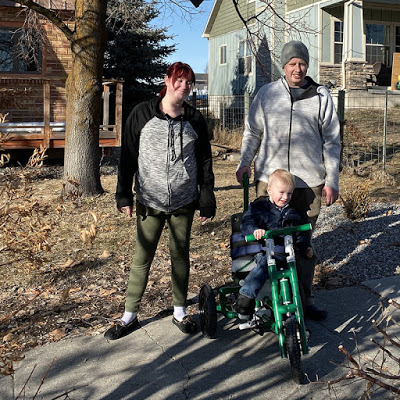
“It was amazing to find this,” Melissa said. “I’ve been so excited about it, and he’s been so excited.” Now he can ride bikes with his sister and friends.
“How is it, Crew?” she asked.
His speech is limited, but he gave it two thumbs up.
Brandy White, who is from Cache County, is looking forward to the difference the bike will make for her son, Graham. “It’s going to help train his brain on muscle memory, how to work his muscles, and how to use them,” she said.
She expects the equipment will help the two-and-a-half-year-old boy learn to walk and crawl. “He loves riding his bike,” she said.
Interested in building a therapeutic trike? Here are your options:
In Utah:
Purchase the items listed in the Instructables directions. Feel free to reach out to UATP in Logan (Dan O’Crowley) or the Uintah Basin (Cameron Cressall) for assistance in putting it together. Note: the trike is designed for tots who weigh 50 lbs and under.
Outside of Utah:
You can download the instructions. If you need help with the parts that are more difficult to fabricate, your state assistive technology program may be able to help (find your State AT program).
UATP thanks the JR Stokes Foundation for supporting the development of this project.
Monthly Blog Digest
Search the blog
State AT Program Blogs
California
Florida
Indiana
Kentucky
Louisiana
Maryland
Massachusetts
Michigan
Montana
North Carolina
North Dakota
Utah
State AT Program Blogs
The AT3 Center, the Association of AT Act Programs (ATAP), and the Administration on Community Living (ACL) make no endorsement, representation, or warranty expressed or implied for any product, device, or information set forth in this blog. The AT3 Center, ATAP, and ACL have not examined, reviewed, or tested any product or device hereto referred.



